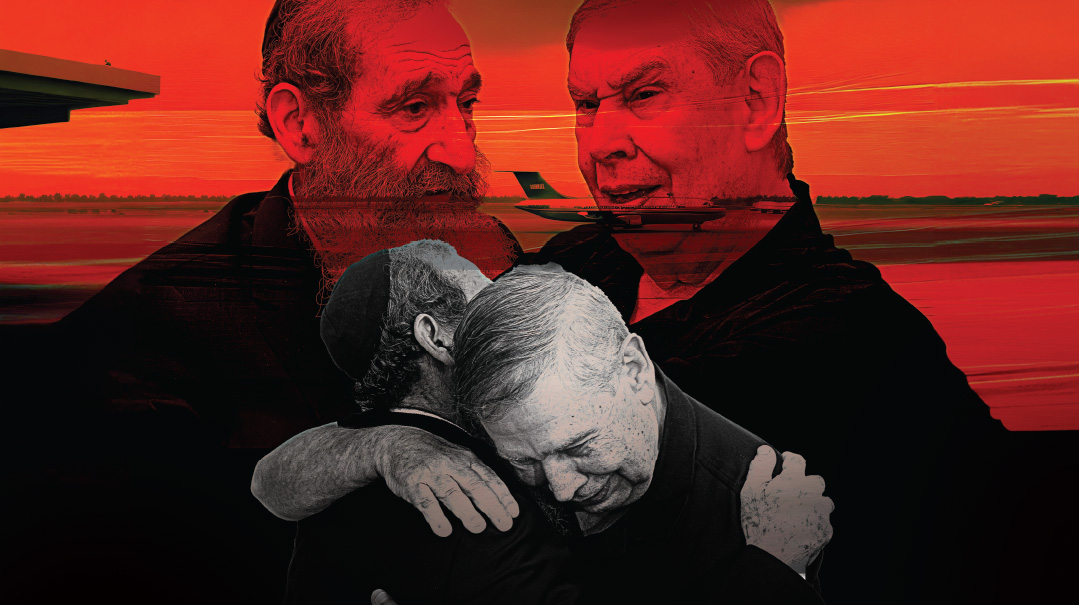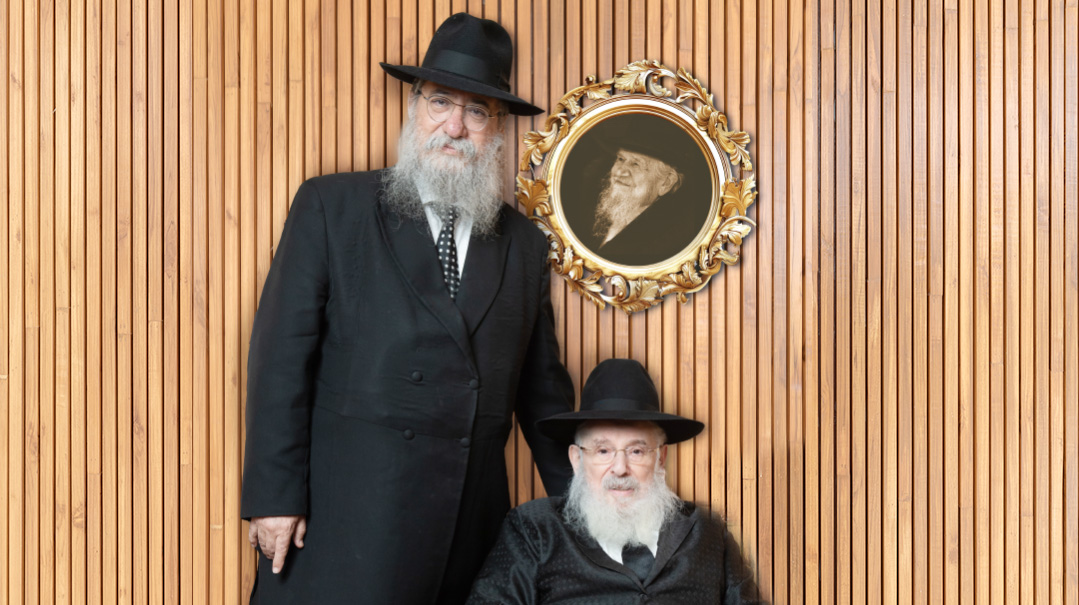The Best Medicine
| June 20, 2023Dr. Dovid Friedman transplanted global top practices to his Lakewood health center
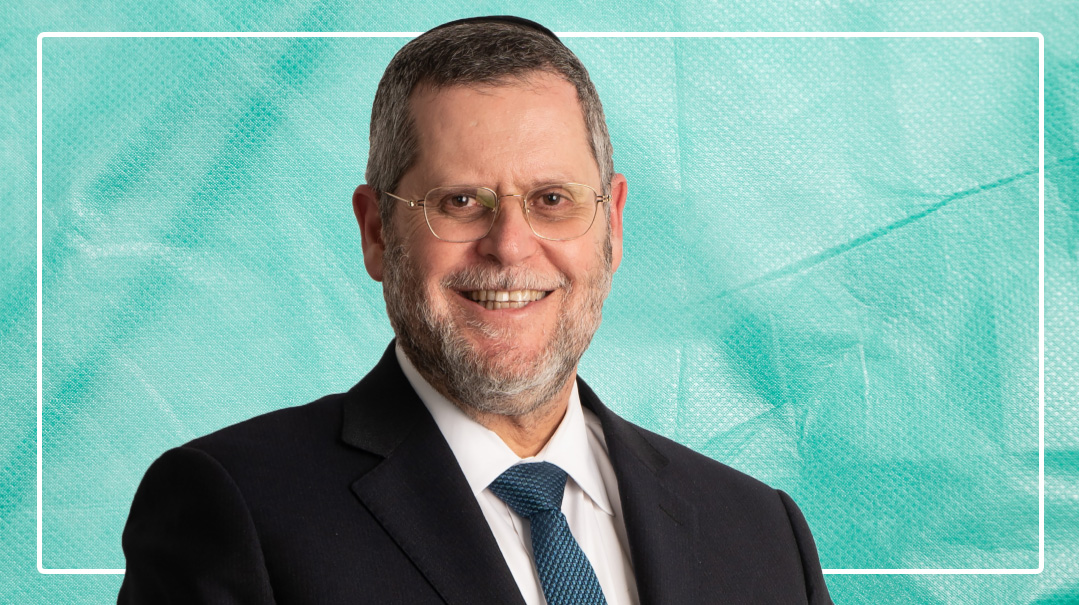
Photos: Ruby Studios
Alecture entitled “Health Care on the Four Continents,” about the various health care systems in the United States, United Kingdom, South Africa and Israel, might not sound like the most exciting way to spend a morning. But for the medical students on the Lakewood Fellowship (a kiruv program that brings Jewish students from across the country to spend their summer breaks interning in various Lakewood industries), sitting around CHEMED’s conference room, it was a talk they’d been anticipating. They wanted to hear Dr. Dovid Friedman — CEO of CHEMED (Lakewood’s Center for Health Education, Medicine and Dentistry) and founder of the Medicine and Ethics conference that brings together Orthodox medical professionals for networking and collaboration — share his own story. For he’s practiced medicine in all four locations, and now he’s determined to leverage his global experiences to create a medical center of the future in Lakewood and beyond. Every medical encounter, he says, is something to learn from and move forward with.
Dr. Friedman, a native of South Africa, began his medical career there when the country was still governed by an official policy of apartheid, and that provided the backdrop for his earliest lessons in what it really means to be endowed with the responsibility of healing others. Today the “Rainbow Nation,” as it’s known for its diverse population of more than 59 million citizens, includes scores of exotic African tribes, each of them speaking its own language and practicing its own culture. Yet for all its diverse citizenry and multicultural populace, up until just 30 years ago, its citizens were divided up neatly into three status categories: “White,” “Colored (a mix of ethnicities),” and “Black.”
Prior to 1994, when political prisoners were released, freedom of association legalized, and a non-racial constitutional democracy established, racial segregation under the all-white government of South Africa dictated that non-white South Africans, the majority of the population, were required to live in separate areas from whites, use separate public facilities, receive separate (inferior) services, and have as little contact as possible. The clear demarcation of South African neighborhoods, beaches, buses, and schools was compounded by stark inequality (a park might have seven benches for whites and one for blacks, and if a black person sat on a whites-only bench, he’d be arrested).
Like all areas of life in South Africa, its health care system was segregated. South Africa’s white citizens were treated by highly skilled professionals in state-of-the-art facilities, while its citizens of color were relegated to squalid conditions. When Dr. Friedman graduated medical school in 1989 from the University of Witwatersrand, he opted to do his residency — the essential postgraduate training for medical students — in a black facility. Being in a black setting for several hours a day and interacting with that population was an unusual choice for someone of his background, and despite growing up in and attending educational institutions in an apartheid country, he didn’t fully appreciate the extent of the discrimination until his work with his black countrymen.
“It left a profound impact on me. It’s one thing to know conceptually what apartheid is, yet it’s quite another to live it daily,” he says. Dr. Friedman was assigned to Chris Hani Baragwanath Hospital — a mammoth facility with about 3,200 beds, reputed to be the largest in Africa and the third largest in the world (the two largest are in China).
Dr. Friedman would make the drive every day from the opulent white neighborhood with the manicured lawns to the hospital, and as he exited the white area, “it was as if I had entered something akin to a third world country,” he remembers. “As I got closer to the hospital, I would see burned-out cars at the end of road that were there as a result of the taxi fights between warring tribes. The casualties of those battles, always badly bruised and often exhibiting a wide range of injuries, were brought to Baragwanath, which looked like a perpetual war zone.”
As masses of patients arrived in the huge emergency ward, admission staff would divide them according to their need. “Acutely ill or injured patients got an actual bed, the less severe merited a chair next to the beds and the moderately ill patients weren’t given any place — they just wandered around until the evening, at which point some flimsy mattresses were passed around for anyone who couldn’t find a place for the night,” says Dr. Friedman.
He remembers one evening when the emergency room was sprayed by bullets. But the gunfire wasn’t the result of some tribesman whose quarrel had gone awry; the bullets ricocheting off the walls were being fired by South African police pursuing a suspect who’d run into the hospital.
Another time, a motor vehicle accident involving a white person occurred right outside the hospital, and the victim was brought into the emergency room. “The man was in critical condition, so we were allowed to stabilize him, but then we got a call from the government that we had to have him transferred within 24 hours to a whites-only hospital,” Dr. Friedman relates. “He was critically ill, and we explained that he would never survive the transport, so the government backed down. The next day they called again, demanding that the patient immediately be transported to a white hospital, yet even when the medical staff protested that the patient was still too ill, the government held its ground. ‘So he’ll die on the way,’ the official told the medical team. ‘Better that than to be treated at a black hospital.’”
Yet despite the unconscionable apartheid policies, the sheer number of injuries and diseases that he was tasked with treating — many unknown to the civilized world — gave him a unique opportunity to understand medicine and pathology on a level that simply would not have been possible had he been assigned to one of the country’s gleaming, well-funded, and adequately staffed hospitals for whites.
“The extent of the diseases and the huge array of pathology and advanced pathology that people came in with because of lack of general medical care was incredible,” recalls Dr. Friedman. “We got exposure to first and third world medicine as well as first and third world diseases.”
Aside from the hard medical knowledge that he gained, there was another trait Dr. Friedman picked up in those huge, terrifying wards: the value of communication. “In many instances, we were dealing with people from rural areas who had no exposure to modernity, and we had to convince them they were in a safe place,” he remembers. “There were so many languages and dialects being spoken that often we had to locate people from similar tribes to calm the patient down and explain what kind of treatment we would be giving. I learned back in that overcrowded hospital that unless people were explained health care in a way that made sense to them and in a way that they felt understood, it was hard for them to accept, and made it more difficult to achieve effective outcomes.”
That vital lesson in communication would prove itself pivotal many years down the line.
Now at the helm of a health care center that has staff trained in English, Hebrew, Yiddish, and Spanish, Dr. Friedman explains that translation is just the first step in communicating effectively, especially when cultural sensitivity is at stake.
“In many conversations with state agencies, I reiterate that just because you translate a document, it doesn’t make it culturally sensitive,” he says.
A recent advertising campaign by the New Jersey Department of Health promoting vaccines is a case in point. The DOH took out a massive billboard overlooking one of Lakewood’s main thoroughfares pointing out how taking the vaccines would allow frum people to resume their normal lives. “Next Stop,” proclaimed the ad, “Shabbat Dinner!” The ad featured smiling characters ostensibly thrilled at the opportunity to have, “Shabbat dinner!,” although the firm hired to photograph the actors clearly had not done their homework well: The actors sported obviously-applied peyos, trimmed beards and hats that didn’t exactly make the Borsalino cut. (The ads were pulled after being mocked endlessly on social media.)
“Here,” says Dr. Friedman, “we try not to be just language sensitive, but culturally sensitive, too. We’re dealing with many demographics, even within the frum world of Lakewood. Chassidim might have different health care approaches from litvish patients, and everyone wants to receive health care that is sensitive to their needs and wishes. So you don’t compromise your standard of care, but you can adapt it to make it more sensitive.”
For example, CHEMED recently opened a second Lakewood facility in the proximity of several housing developments populated predominantly by chassidim. “We created focus groups to engage community members and hear what they want,” says Dr. Friedman. “I don’t want either me or my staff deciding what people want — I want the community to tell me what they want. So we had focus groups in which we asked lots of questions to a cross range of the population that we’ll be serving.”
The CHEMED team took the data, aggregated it and boiled it down to several points that Dr. Friedman and his team are working on implementing — among them a men’s-only waiting area and a technology system that will inform patients and time-strapped parents how long a wait is expected.
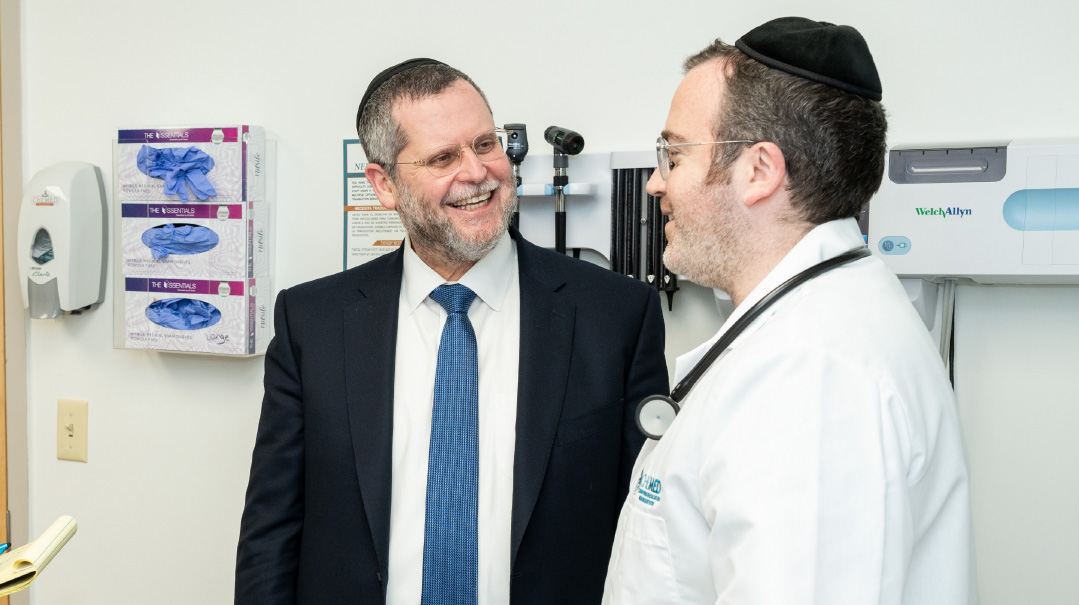
Dr. Friedman with medical center colleague PA Yehuda Naiman. Every medical encounter is something to learn from and move forward with
A
fter two years at Baragwanath, Dr. Friedman left to focus on primary care medicine. “I wanted to connect and understand the families, and get to know them and not just their ailments,” he says. He worked at a clinic in Alexendra, a poor, black-only township near Johannesburg. Dr. Friedman took full advantage of the fact that the South African system of health care ensured that his financial reimbursement was not directly tied to any particular quota or volume he produced. “Otherwise, I surely would have gone broke,” he says. “I would sometimes see a patient and tell him to come back in the afternoon before prescribing medicine, just to see if perhaps the ailment changed since the morning and to confirm that antibiotics were appropriate treatment.”
After a year of working in this family practice clinic, the young doctor and his wife, Batya, decided to relocate with their growing family to Eretz Yisrael. But the year was 1990, and his initial aliyah didn’t last long. After just nine months, the Gulf War broke out when Saddam Hussein ordered his soldiers to invade neighboring Kuwait, setting off an international conflict and drawing Israel into the center of the battle with a six-week long barrage of SCUD missiles. Knowing that many Arab states would be unwilling to fight alongside Israel, the Iraqi dictator made a calculated, strategic move: If he could provoke the Jewish State into retaliating militarily and attacking Iraq, it would cause many Arab countries to abandon the US-led coalition that was leading the offensive against Iraq, as they wouldn’t fight on the same side as Israel.
“Our families were pressuring us to leave Israel, and so I went to Rav Shlomo Zalman Auerbach to ask him what we should do,” recalls Dr. Friedman. As they hadn’t really settled yet, Rav Shlomo Zalman told them to leave, but not to return to South Africa. They chose the UK.
Unlike the apartheid system he’d recently left, in which white citizens received first rate medical treatment while blacks were relegated to under-resourced, poorly staffed, and overcrowded clinics and hospitals, the United Kingdom’s socialized health care system gave free care to all its subjects through the publicly funded National Health Service (NHS).
During his time in the UK, Dr. Friedman, unsure of how long his stopover would last, took a break from his medical career, instead enrolling in a Manchester kollel to learn full-time. Just two seats away was a fellow doctor who had taken a planned sabbatical year and joined the kollel as well. Over their pre-seder coffees, the doctors-turned-avreichim would discuss the differences in medical systems, with the South African trained Dr. Friedman and the English educated doctor trading notes.
“In the UK, the government controls how many doctors are in which areas, so you can’t just open a practice — you have to be allocated a practice by the government,” Dr. Friedman explains. “That happens in two situations: when a practicing doctor passes on, or when a doctor’s workload necessitates that he look for a partner. They apply to the NHS who find the doctor to fill that post.”
While the ironclad control of the government is advantageous because it ensures health care to all Brits at no cost, because there is no competition, it’s often a struggle to get cutting-edge, effective, proactive health care to the public.
“Preventative care is always cost effective, so the UK system rewards that by incentivizing doctors to have their patients take preventative measures,” he explains. “If you hit 80 percent of patients taking certain measures that the government sees as preventative, your reimbursement rate for those services will be very high.” That’s obviously a boon for the masses, but there is some serious fallout along the way. “To get into any sort of specialist, there is a rigorous referral process in place,” he says. “A doctor must be able to make an explanation satisfactory to the bureaucrats at the NHS justifying why they can’t treat this particular condition.”
The family doctor appreciated the low barrier of entry to coverage, but balked at the difficulty in obtaining specialists. He was still going strong in kollel though, and he had no immediate plans to resume his medical career. In fact, he was getting so comfortable in this new life that he even contemplated moving to Gateshead to join the yeshivah and kollel there.
Dr. Friedman asked the Manchester rosh yeshivah, Rav Yehuda Zev Segal, if he should continue his learning, and if so, where. The response was eerie. “The Rosh Yeshivah responded that I should stay in Manchester, but then added somewhat cryptically that if I’d like, I can go back to Eretz Yisrael… on Purim,” recalls Dr. Friedman. That second part was somewhat mysterious and unsolicited, but Dr. Friedman marveled when the Gulf War officially ended on February 28, 1991. The Hebrew date was 14 Adar, 5751.
Dr. Friedman returned to Israel and resumed his practice, landing a job as a doctor in Kiyrat Sefer for the local Kupat Cholim health fund, a sort of managed Medicare/Medicaid practice in which all the primary care and specialty care is managed through that one entity. Being a physician in Kiryat Sefer also meant being “the” physician, as the chareidi stronghold did not have any doctors in its proximity until Dr. Friedman arrived.
The knowledgeable, genial physician moved up the ranks of the Israeli system, eventually becoming head doctor of the entire Modi’in region for Meuhedet. The post included tasks that were more administrative in nature, and it gave Dr. Friedman the ability to bring different specialties and outpatient services to the clinics that he was overseeing. Dr. Friedman had stipulated with Meuhedet that he’d take the position as long as he would be able to still see patients, and the combined administrator/doctor role turned out to be a good fit: The new position allowed Dr. Friedman great leeway in molding the medical apparatus to his vision. “These health funds were entities like the insurance conglomerates — they had huge infrastructures in place, so if I would make a case for a service to be added, they would approve it, and they had the system and infrastructure to implement it.”
B
ecause of the socialized structure of the system (today, three decades later, the system has seen many changes), Dr. Friedman wielded the “power of the pen.” He implemented a philosophy that a patient should never be issued a flat-out denial for a request for services.
“Not that we approved everything that came our way, but when we had a patient come to us who was recommended to undergo certain tests, we looked at his entire file and based on that, either gave the approval for the test that the primary care doctor had recommended or we’d recommend a different test,” he says.
The new system was popular with its patients and the administration. “I didn’t look at the finances, but the folks in the administrative offices at Meuhedet were excited — we were making more money than any other region while maintaining the best clinical outcomes, and there was more demand for people to join,” he says.
Dr. Friedman’s clinic achieved the coveted award for having the highest satisfaction level of any clinic in the country. It was no doubt partly due to Dr. Friedman’s insistence that no patient ever be denied appropriate testing or treatment, but there was something else, too: the value of communication he picked up in South Africa.
“I never recommended a patient to a specialist without calling the physician first and relating my thought process in referring them,” he recalls, “and when I would call, the specialist would say to me, ‘Why are you calling ahead? No one else calls me, but you know something? I really appreciate it.’”
And so a synergy was formed. “There was a connection between me as the primary care provider and the specialist. We were able to collaborate and the patient was getting a consistent message. If a primary care provider doesn’t understand what the specialist is doing, and the specialist isn’t privy to what the primary care provider is telling the patient, it creates a level of anxiety. By creating a connection and getting one unified message across to the patient, it gave us a much higher patient satisfaction, better outcomes, and though this wasn’t our intention, Meuhedet was telling me that we were doing superb from a financial perspective as well, because our methodology allowed us to prevent unnecessary run-around, while at the same time getting people the help they needed.
And even though the Israeli system, like the UK, was socialized medicine, Dr. Friedman found that the issues he found wanting in the latter were not present in Israel. “Generally, you could get good specialists, even elective surgery, without much waiting, whereas in the UK, you’d sometimes have to wait years for such a surgery. We never felt like we were fighting the system.” Dr. Friedman posits that this may be due to the influx of American-trained physicians coming from United States to Israel and sharing their knowledge and training with a younger generation of Israeli medical students.
W
hile Dr. Friedman integrated well into the Israeli system, a personal medical situation forced him to continue his medical odyssey on yet another continent.
“My son was born with a certain health condition, and the system wasn’t able to provide us with the level of specialty care that we needed for him,” Dr. Friedman says. He consulted two gedolim on how to proceed: Rav Elyashiv and Rav Moshe Shapira. They both agreed that the family should emigrate to America. When Dr. Friedman expressed his hesitancy to Rav Shapira, the Rav responded that, “you South Africans are too soft! Go tell the Americans that whoever helps you will see tremendous brachah.”
The Friedmans settled in Lakewood’s Forest Park development, because, “we wanted a place as similar as possible to Eretz Yisrael.” His foreign medical degree and license weren’t fully recognized by the medical establishment in the United States, so he joined what he jokingly calls, “a small company specializing in tax and business services” — American Express, or “AmEx.” The goliath financial corporation had recently acquired a huge health care portfolio, with “FQHCs” (Federally Qualified Health Centers) — federally funded nonprofit health centers or clinics in all 50 states that serve medically underserved areas and populations regardless of one’s ability to pay — and Dr. Friedman worked as a consultant for the recent acquisition.
He was tasked with training the staff at the various facilities on how to improve workflow, patient safety, and to design, establish and improve the implementation of electronic medical records. He flew around the country consulting for community health care centers on the three aforementioned points, and as he was being jetted from one facility to another, noticed something interesting about the American health care system.
“The United States is the top of the line if you’re looking for subspecialties, but there is an emphasis on treating the pathology more than the patients. There is more emphasis on curative than preventative services, and physicians as a whole are encouraged to go into subspecialties, which produces superb quality health care, but doesn’t produce good overall outcomes for patients. Medical students aren’t encouraged to become general practitioners anymore.”
But Dr. Friedman saw it differently. “I believed we shouldn’t only help people heal, we should help people prevent illnesses in the first place — it’s cost-effective to the patient and cost-effective to the system overall. This is done chiefly through a strong primary care provider system, which can have the longest-term impact on patients, especially if it’s implemented well.
“Specialty is extraordinarily important if someone needs it,” he clarifies, “but it needs to be a coordinated approach dealing with the patient and not just with pathology. Whatever illness there may be, there is always a patient behind it. The patient will be compliant or not, the patient may understand or not — the pathology is just one aspect of it — and in addition, the patient is surrounded by a family and they, too, can be affected by what is going on in medicine.”
It would still be some time before Dr. Friedman would be able to implement his vision. After being with AmEx, Dr. Friedman accepted a job with Henry Schein, one of the biggest medical companies in the world and employer of tens of thousands of people in over 35 countries, as Physician Executive. Shortly thereafter, the company invited him into their C-Suite as Chief Medical Officer, a position that included generous compensation in addition to shares in the billion-dollar company.
But there was another offer on the table. “There was some talk about building a federally qualified health care clinic here in Lakewood, and they heard I had experience,” he says simply, “so they reached out.” Initially, he dismissed the idea. But then he mulled it over a bit more, and decided it was for him.
But why would he opt to run a health center in Lakewood over enjoying one of the most prominent — and lucrative — positions in the administrative health care world?
“First of all,” he explains, “I had accrued plenty insight into the challenges of starting a community health care center. Everyone in the frum community wants high-quality care — it’s a discerning clientele and no one wants to go to a general clinic.” There was another concern. “How are you going to bring mental health services to a community that by its very nature is traditional and cautious about anything new?” he asks. “If this was going to be successful, it was going to take time and patience.
“But,” he continues, “I’d seen so many health care centers at this point: Many were very well run, and some were extremely poor — but I wanted this to be different. I wanted to build an integrated health care system where we can create a vision and move the organization in line with that vision to serve the fastest-growing community in the entire country, but shrinking in terms of medical professionals.”
He points to the fact that a local hospital shut its labor and delivery ward, this, “despite us having the second highest birth rate in the world, only slightly behind Niger.” And so the offer was enticing.
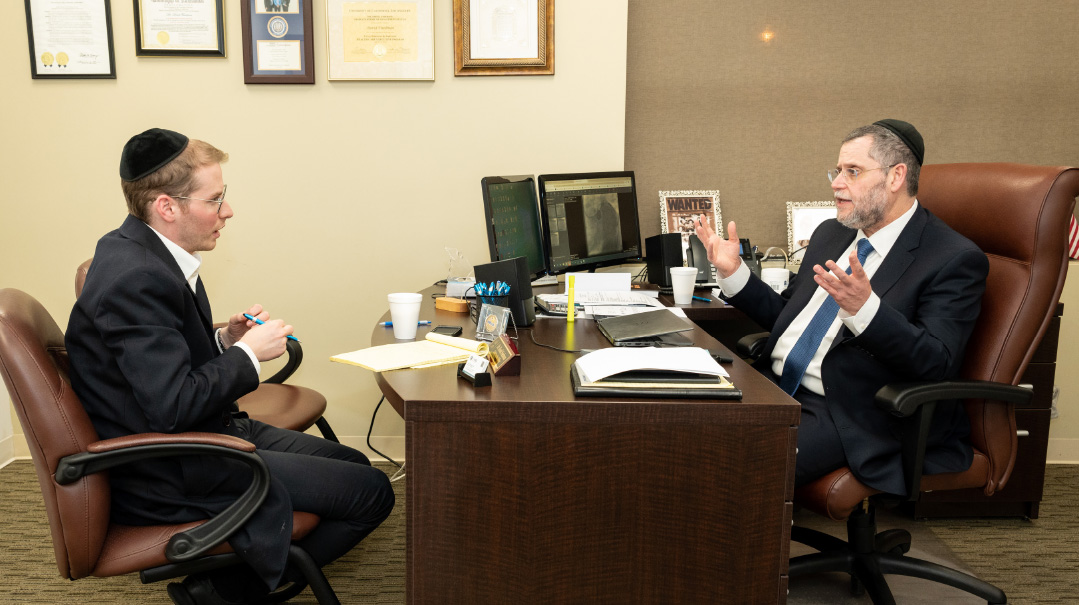
“I learned in that overcrowded South African hospital that the care would work if it was explained in a way that made sense to them,” Dr. Friedman tells Mishpacha’s reporter. In hospitals around the world, perhaps the most valuable skill he picked up was the art of communication
DR. Friedman knew he wanted to build on the key concepts he’d learned along his journey around the world: culturally sensitive, primary care based on an integrated, holistic approach to medicine.
The result is one of the most admired health care centers in the region. “We went from the State Health Department looking at us as the Jewish place in Lakewood to being the model health care center in the state,” a Lakewood askan told me. That admiration was on display when New Jersey governor Phil Murphy and his health care team — in one of their first public appearances since the onset of the pandemic — made a highly publicized visit to CHEMED to express his appreciation for the center.
“Dr. Friedman encourages us to think huge,” said Mr. Menachem Berkowitz, COO of CHEMED. “He gave us his vision of integrating our entire operation. That means that if a patient walks in to our urgent care, we have his entire medical record pulled up, so the physician may have a different perspective of what he is looking at. If a young man walks in complaining of strep-like symptoms, a traditional urgent care may be able to check for a specific diagnosis, but they don’t know about the patient. Here, we can see what his history is — did he come in recently for anything similar? Maybe we should approach it from a different angle.”
The center has also set up a case management unit in which a team of nurses, therapists and pharmacists follow up with patients on any referral-based matter — getting test results, getting access to other doctors if necessary, helping the patient navigate appointments and keeping in touch with the specialist team to be able to relay the information back to the primary care provider, so everyone involved with the patient is on the same page, and the patient is getting a consistent message.
Dr. Friedman is clearly in his element as he provides a tour of the facility. In the pediatrics department, a specialty team was brought in from Rutgers in order to build a better system, and they’re doing the same with adult specialty.
“We believe very strongly in an integrated system,” Dr. Friedman says. “For example, if one of our providers picks up that a patient may be having anxiety, a social worker will come in on the spot and talk to the patient for 15 minutes. Similarly with dental — it isn’t a separate, freestanding department, but is part of our team, which means that one of the staff can come into any of the other exam rooms if we see that a patient also needs dental work.”
While Dr. Friedman is clearly satisfied, he’s not slowing down.
“These are programs that we created, and we continue to look for other ways. My plan is to create a medical village and bring in partners to create outpatient and image services and a high level of academics. I don’t want to outsource all the specialties. I do believe that when we need expertise, we should push to get into the best medical facilities, but I don’t believe in sending out for every patient — I want to bring the highest level of quality care to Lakewood.”
And not just Lakewood. That’s one reason he initiated the annual Jewish Medical Ethics Conference four years ago, as a platform for Orthodox medical professionals from all over to join together and explore the most relevant issues facing the frum community, and to harness cumulative knowledge, talent and connections.
Dr. Laurence Cohen, a radiologist from Brooklyn who has attended the conference since its inception, agrees. “Since the first conference in 2019, many patients around the world have been helped and lives have been saved due to connections made,” says Dr. Cohen, noting that it’s an opportunity to meet and interact with medical colleagues in many different specialties. “Those relationships are invaluable, whether to consult on a case or to assist with treatment.”
If Dr. Friedman took all the medical experiences culled from around the world and brought the best of them to Lakewood, he now envisions bringing Lakewood to the rest of the world — or at least to other frum communities and beyond.
“If we do this right, we can create a model for all over the country. If we improve the process of how a patient goes through this system, we can save money for the patient and the system,” he says. “Most solutions are not complex. The complexity is implementation. People are resistant to change, but it can be as simple as looking at workflow, making sure services are implemented at the right time, providing them early, and improving outcomes. It’s so easy to create your daled amos, to build boundaries around yourself, but real success is to work together so your daled amos are no longer four, but eight, twelve, however far they can stretch. One person alone can only accomplish so much, but when we integrate together, the expansion is exponential. And that, ultimately, is the best outcome.”
(Originally featured in Mishpacha, Issue 966)
Oops! We could not locate your form.

